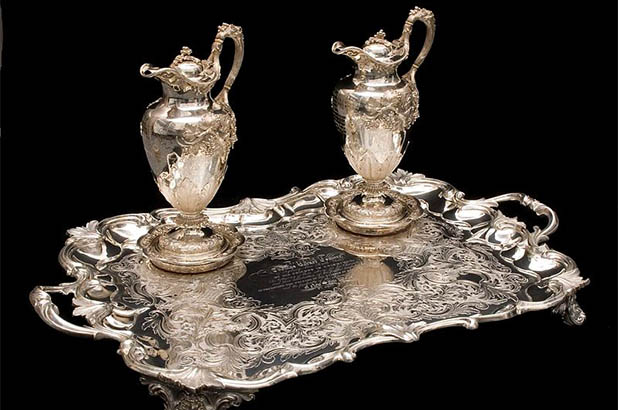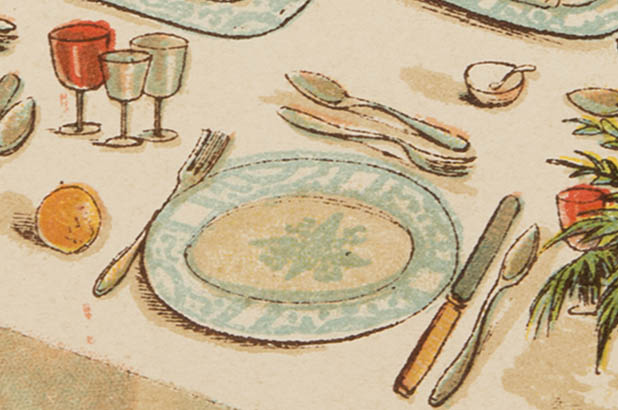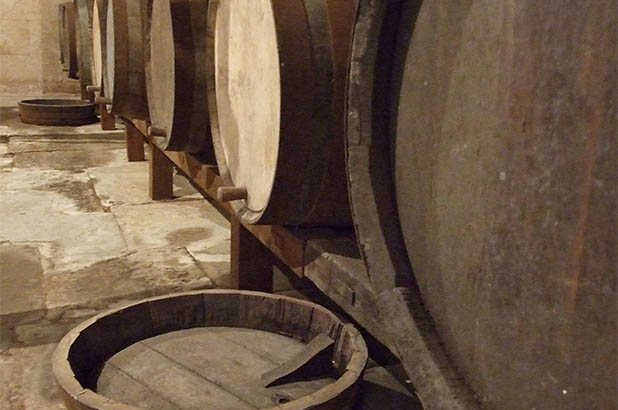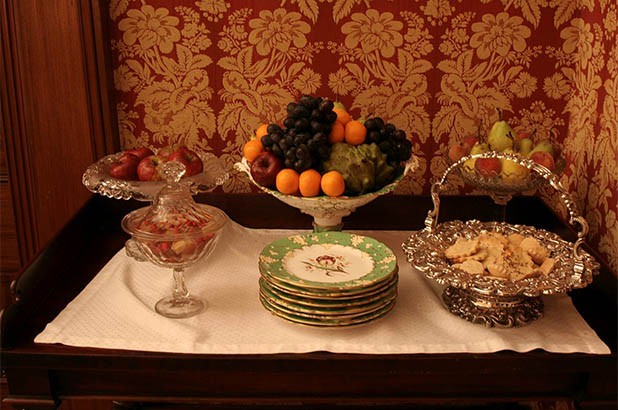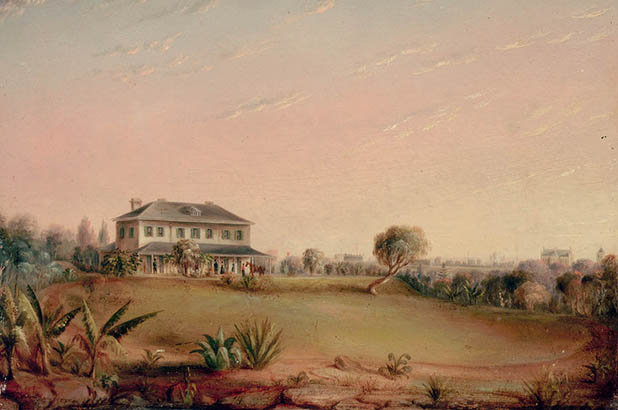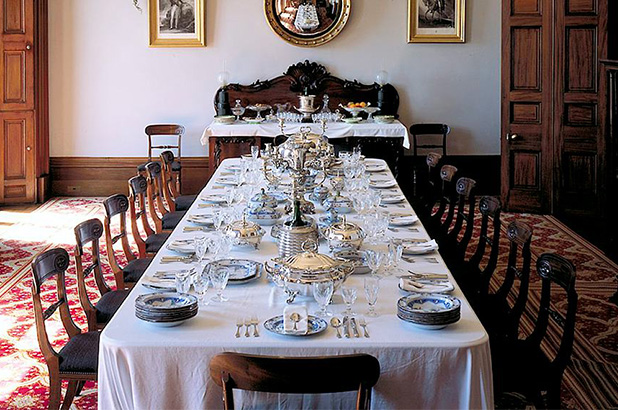Now that we’ve gone through Elizabeth Bay’s cellars, it’s up the servants’ stairs and on to the table. Claret anyone? Continue reading
Cheers!
Silver claret jugs, 1840, silver coasters, 1842-1843 and silver presentation tray, 1838. Elizabeth Bay House Collection and Caroline Simpson Collection, Sydney Living Museums. Photo © Jenni Carter
